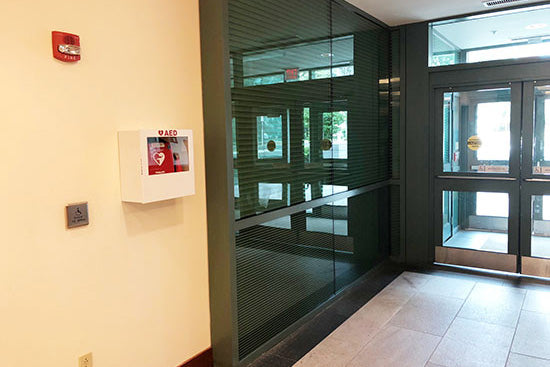The Critical Case for Universal AED Deployment in Canadian Workplaces
In Canada, many workplaces require First Aid and CPR/AED certification for designated employees, yet surprisingly, there's no universal requirement for these same locations to have an Automated External Defibrillator (AED) on site. This disconnect creates a dangerous gap in emergency preparedness that needs to be addressed.

The Lifesaving Potential of AEDs
When someone experiences sudden cardiac arrest, every minute without defibrillation reduces their survival chances by 7-10%. While CPR is crucial for maintaining blood flow, an AED is often the only intervention that can restart a heart in cardiac arrest. The question isn't just "where is the nearest AED?" but rather "why isn't there an AED wherever there are First Aid & CPR/AED-trained individuals?"
https://aed.ca/collections/aeds

Current State of AED Requirements in Canada (AED Canada)
While CPR/AED certification is mandated in many workplace settings, the actual presence of AEDs remains largely voluntary. Some provinces have taken steps toward requiring AEDs in specific locations like schools and gyms, but there's no consistent national standard. This creates a peculiar situation where workers are trained to use equipment that may not be available during an emergency.
Cost vs. Benefit Analysis
The financial investment in an AED might initially seem significant, with prices ranging from $1,595 to $2,500 for a portable AED. However, when compared to the potential cost of a life lost due to the absence of this critical device, the investment becomes negligible. Modern AEDs are also becoming more affordable and portable, making implementation more feasible than ever.
https://aed.ca/products/stryker-physio-cr2-semi-auto-english-wifi
CPR vs. AED: A False Dichotomy
The relationship between CPR and AEDs is complementary, not competitive. While CPR maintains blood flow, an AED addresses the underlying electrical problem in the heart. Training programs consistently teach both skills together because they work in tandem. It's illogical to require training in both but only mandate the availability of one intervention.
Implementation Considerations
Organizations looking to acquire AEDs can find resources through companies such as AED.ca, which provide information about equipment options and maintenance requirements. Key considerations include:
Training Integration: Existing CPR certification programs already include AED training, making the transition to having on-site AEDs seamless from a skills perspective.
Maintenance Requirements: Modern AEDs require minimal maintenance, with most units performing regular self-checks and requiring only occasional battery and pad replacements.
Accessibility: Portable AED units can be easily mounted in central locations and moved as needed for special events or activities.

https://aed.ca/products/zoll-aed-plus-fully-automatic-aed-with-cover
The Path Forward
To address this gap in emergency preparedness, several steps should be taken:
- Legislative Change: Provinces should update workplace safety regulations to require AEDs wherever CPR/AED certification is mandated.
- Public Awareness: Enhanced education about the critical role of AEDs and their ease of use can help build support for broader deployment.
Conclusion
The disparity between requiring CPR/AED training and not requiring actual AED presence is a dangerous oversight in Canadian workplace safety regulations. As we continue to prioritize emergency preparedness, ensuring AED availability wherever training is required is not just logical – it's essential for saving lives.
With modern AEDs becoming more affordable and user-friendly, the time has come to close this critical gap in emergency response capability. The question isn't whether we should require AEDs alongside CPR training, but rather how quickly we can implement this vital change to protect Canadian workers and the public.
Please contact AED.ca with any questions or comments.






